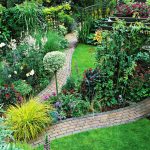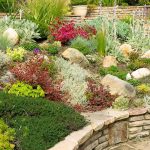Talus
There are several ways to create artificial scree. The easiest of these is to remove the topsoil in a Sunny area with well-drained soil. Ideal expanding downward platform between large boulders. In the dug-out deepening with a layer of 20 cm fill the soil mix consisting of 1 part of the sod earth, 1 part of peat or leaf humus and 3 parts of crushed stone or pebbles.
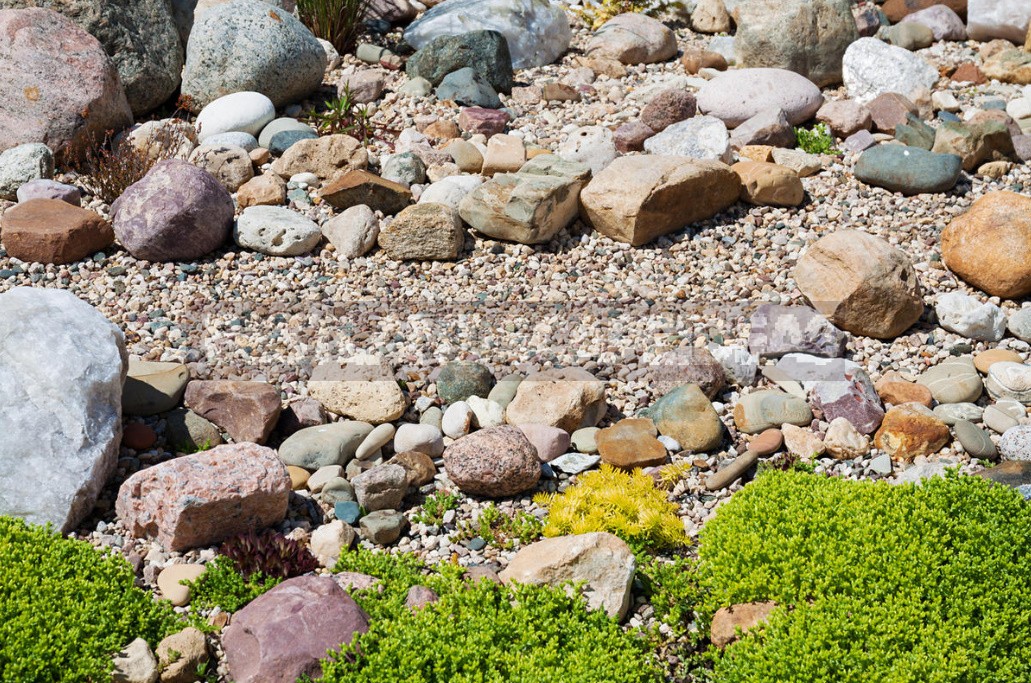
Another suitable place for scree is the border between the lawn and the rockery — in this case, the scree needs something to protect, so that the rubble does not crumble on the grass. Scree quickly overgrown with weeds, so under a layer of stones 5-6 cm thick laid geotextile.
Raised flower bed
Growing plants on a raised bed is becoming increasingly popular. Such a flowerbed takes up little space, it is easier and cheaper to arrange it than to build a rockery-hill. If space allows, you can make a flower bed in the form of a terrace or several terraces at different levels and place creeping plants on them.
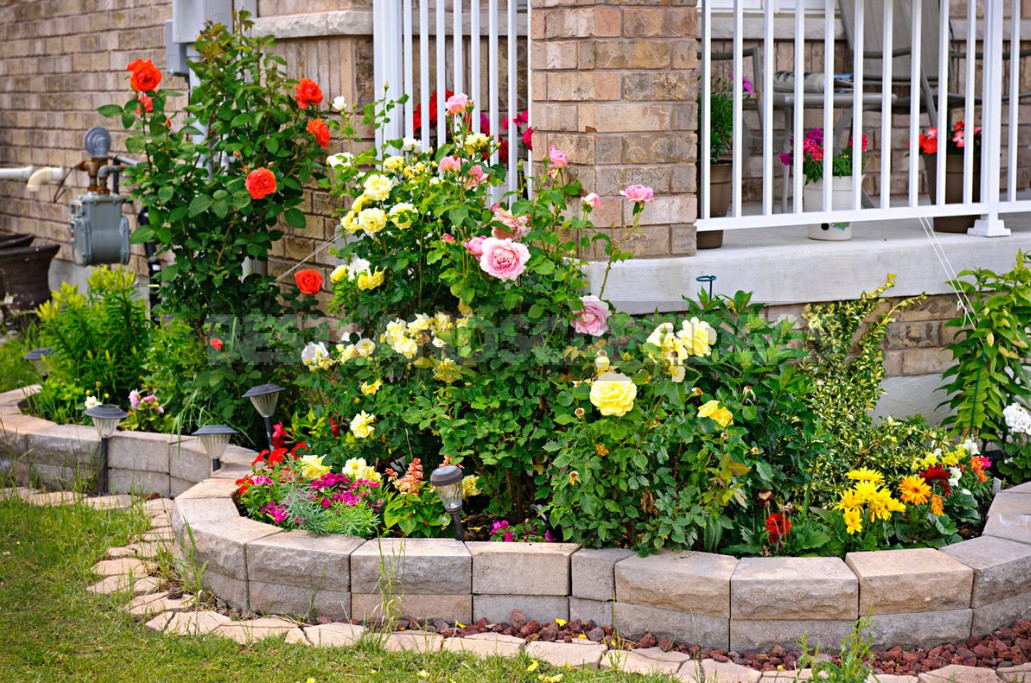
In the beginning the site intended for a bed, dig and remove roots of perennial weeds. At the height of the walls over 30 cm, the base of the flowerbed is concreted. If walls spread with application of a limy solution in the basis leave apertures for a drain of water. The constructed container is filled with a substrate: at the bottom-a drainage of crushed stone, pebbles or coarse sand (10 cm); then a layer of fertile soil (20-30 cm), composed of sod soil, leaf humus and gravel in a ratio of 1:1:1.
Even after compaction, the soil will eventually settle. To avoid this, pour more soil or compost. Another option: put an extra row of bricks not cemented together and remove them as soon as the soil settles.
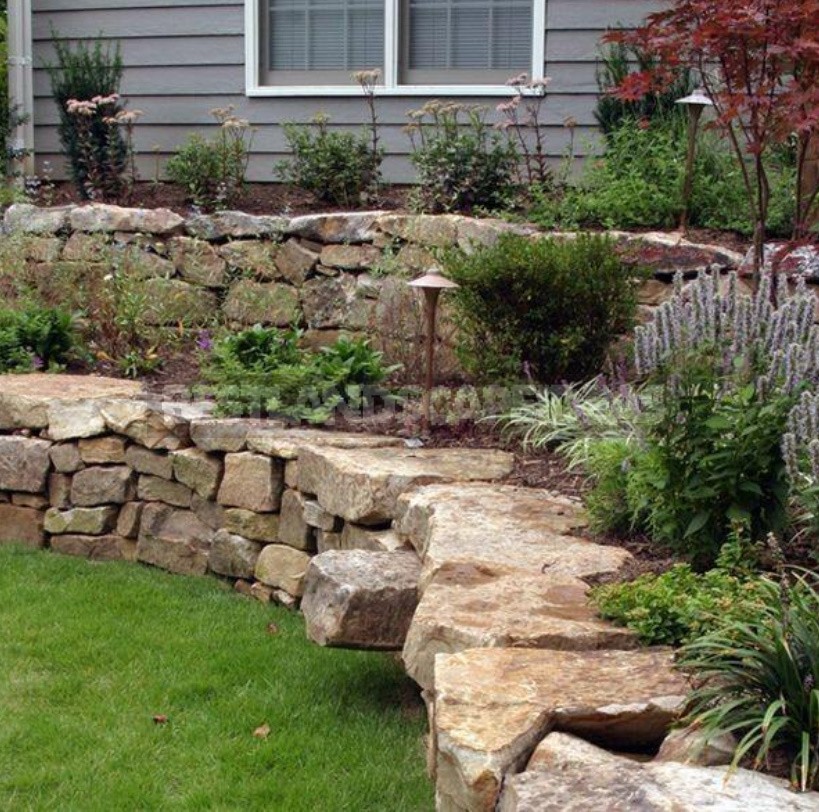
Raised flower beds are a useful element of garden design, allowing planting at different levels and giving the garden additional appeal. Raised flower beds are ideal for rock, Alpine or other plants that require special conditions, because with such planting the gardener is able to provide good drainage.
Raised flower beds of brick-a suitable solution for those who have a brick house. If possible, the brick of the flower garden should be combined with the facing of the house. Wall blocks of different colors and finishes are easier to install than bricks. To the walls of the flower garden did not settle and did not crack, they need a Foundation. Wooden raised flower beds are quite cheap. They do not require a Foundation, but they are not as durable as stone.
Footpath
The size of the planted plants should correspond to the size of the plates. It is better to lay plates and plant plants at the same time to immediately assess their compatibility in shape and size. Plants adorn boring paved paths and patios, but few of them-such as Thymus, Sagina and Acaena-withstand heavy trampling.
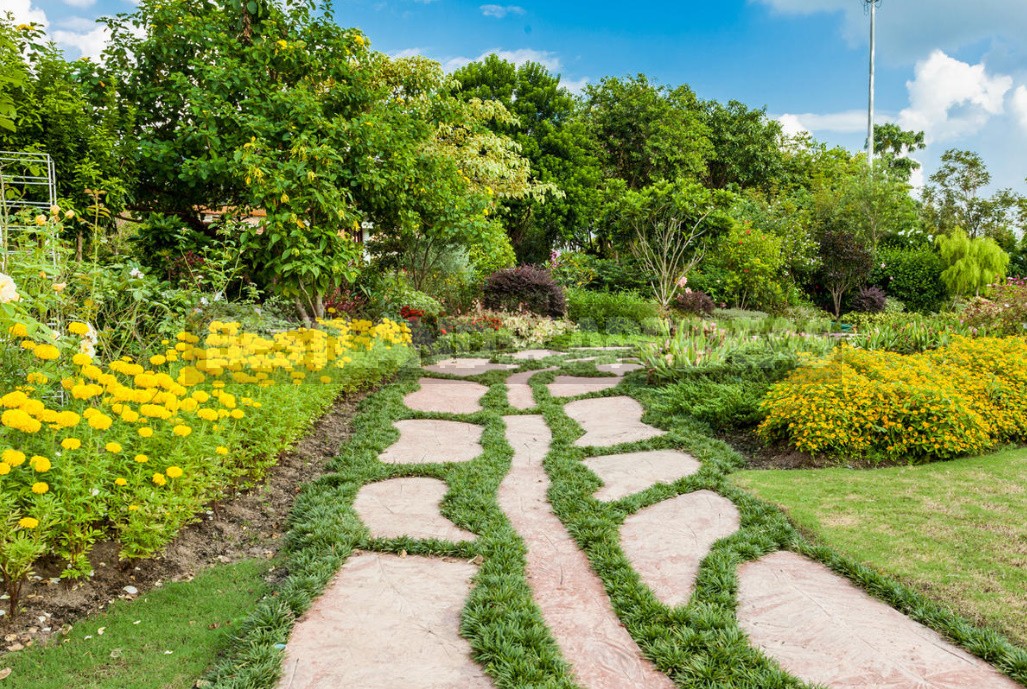
With an old kitchen knife, remove the soil from the cracks between the plates and gently plant a small plant there. Fill the hole with a soil mixture consisting of 1 part turf, 1 part sifted peat and 1 part coarse sand. In pits with soil mixture, you can sow the seeds, do this usually in the spring.
Artificial rock
Impressive structures of huge stones are no longer erected, but in recent years have again begun to build artificial rocks in connection with the General revival of interest in Japanese rock gardens. The most popular form of rocks — Three Stone Buddha, which in Japan everywhere meet in gardens under temples. This triangle, the apex of which forms high and direct, as column, stumbling, and on the sides lie 2 rounded.

Stones, to look natural, must be with weathered and uneven surface, it is better if they are covered with moss. This type of slide can decorate a lawn or patio, at its base is to plant low plants like Acaena or Thymus.
Container-rockery
Such mini-flower beds first began to create in the 30s of the twentieth century. They have their advantages. First, they are easy to create a specific soil, for example, for Heather. Secondly, they can be installed anywhere (on the patio, terrace, balcony, etc.). Plants are easy to care for.

The basis of the success of such a flower garden is the correct selection of the substrate. It should be well drained, but with a high water-holding capacity. This requirement is satisfied by a mixture of 1 part turf land, 1 part leaf humus, 1 part fine gravel. A prerequisite-mulching the soil surface with fine gravel.
With a clear understanding of the varieties of rocky gardens, you can carefully decide which one is best for your site.





